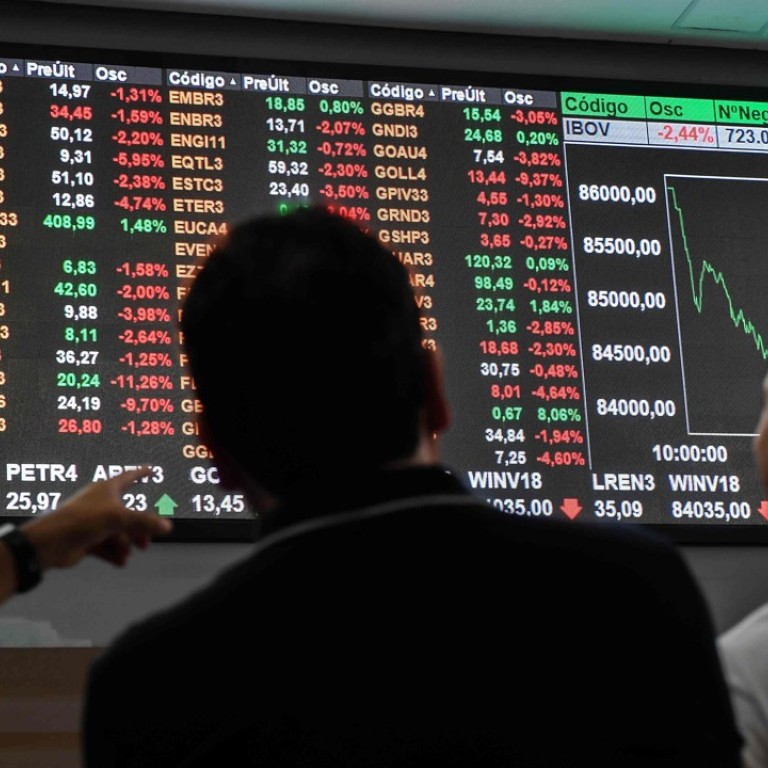
Brazilian, Mexican and Colombian stock exchanges make sales pitch to investors from Hong Kong, China
- Senior officials from Latin American exchanges say there are plenty of opportunities for investors
- Local brokers say Hong Kong-based investors will have to be educated first
Three major Latin American markets are wooing Chinese and Hong Kong investors to trade on their bourses saying they present huge opportunities, but brokers feel a general lack of awareness and knowledge about these economies could deter local investors.
Senior stock exchange officials from Brazil, Mexico, and Colombia – the three largest economies in Latin America – were in the city recently to meet asset managers to diversify and grow their investor base.
“Latin America is the other fastest-growing region in the world with about 500 million people in the region, representing 8 per cent of the global gross domestic product and population, but it’s under-represented in the region,” said Juan Pablo Cordoba, president of Bolsa de Valores Colombia.

Cordoba along with Sergio Gullo, head of international business development at Brasil Bolsa Balcao (B3), and Rodrigo Velasco, deputy CEO of Bolsa Institucional de Valores (BIVA), Mexico’s second stock exchange which opened in July, told investors, asset managers and brokers from Hong Kong and China that there was huge scope for overseas investments and tremendous opportunities await them.
Their pitches were backed by Franklin Templeton Investments and Bain & Company.
Louis Tse Ming-kwong, managing director at VC Asset Management, said there are two factors that might deter Hong Kong and mainland investors from investing in Latin American markets.
We believe that Latin American portfolio should be part of the conversation and we, as the exchanges, are providing the avenues to make that happen
“First is that they don’t know much about these exchanges and they need to do their homework,” said Louis Tse Ming-kwong, managing director at VC Asset Management. “Another is the time gap, and it's crucial because it’s difficult to ask people to stay up late so they can monitor these markets.”
Louis Wong, director of Phillip Capital Management (HK), said he was not worried about the time difference as Hong Kong investors still trade on US markets. “Investors should be educated first and if they are interested is another matter,” Wong said.
But beyond promoting the region, the exchanges made a pitch unique to each of them.
Gullo said as Brazil was the largest economy in South America, “the Brazilian market was very good at attracting investment from foreign investors, and in equities foreign investors account for 50 per cent of the entire market,” adding that B3 covers all asset classes.
Velasco, whose BIVA exchange competes with the bigger Mexican Bolsa, focused on Mexico’s economic strengths.
“We have a very open economy with 46 free trade agreements in the world, so we’re open for business to the world,” he said. “The US is our stronger ally in terms of commerce, but the strategy in the last couple of years has been to diversify trade and commerce with all the other parts of the world. Asia is key when talking about business and new developments not only in the government, but also in private companies looking for ways to diversify and to do more business with the region.”
Data from Euromonitor showed that foreign direct investments in Brazilian stocks in 2017 rose to US$778.29 billion, higher than the US$770.02 billion in 2016; in Mexico it rose to US$489.13 billion in 2017 from US$469.11 billion in 2016 and in Colombia it climbed to US$180.23 billion last year from US$170.26 billion in 2016.
While the main stock index in Brazil is up 15.7 per cent, the Mexican benchmark is down 7.9 per cent and Colombia’s gauge has fallen 8.1 per cent this year.
Brazilian stocks hit a record high late last month following the election of far-right candidate Jair Bolsonaro in the presidential elections but have a bit of a wobble since.
Bloomberg data showed that Brazil’s Ibovespa had the best global performance among 94 indices in October, gaining 18 per cent in US dollar terms and 9 per cent in local currency terms.
Cordoba believes the region is in “for the long-haul”.
“We believe that Latin American portfolio should be part of the conversation and we, as the exchanges, are providing the avenues to make that happen,” he said.

